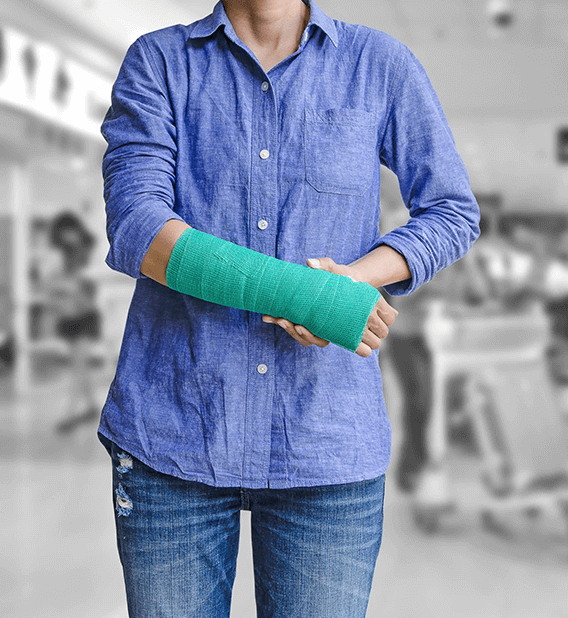Whether you work in the finance, construction, or hospitality industry, you have likely developed a repetitive motion injury. Repetitive motion injuries, which many also call repetitive stress injuries or cumulative trauma injuries, occur when a person puts stress on certain tendons, muscles, or bones via overuse or repetitive motions. This strain causes extreme pain, discomfort, or injury. Common injuries of this nature include tendonitis, carpal tunnel, and bursitis. According to FindLaw, these types of injuries account for approximately 20 percent of all workplace injuries. If you sustained a repetitive motion injury, you may wonder if you can file a California workers’ compensation claim for it. The answer is yes.
The “Silent” Workplace Injury
Imagine working long hours at a computer day after day. Over time, your wrists begin to ache and your shoulders grow stiff. One morning, the pain becomes unbearable, and your doctor diagnoses you with carpal tunnel syndrome. You’re told it developed slowly, from the very work you do every day.
For thousands of Californians, repetitive motion injuries silently build up until they affect every part of life. The good news: California law does provide a path to compensation.
What Are Repetitive Motion Injuries?
Repetitive motion injuries (RMIs), also called repetitive strain injuries (RSIs) or cumulative trauma disorders (CTDs), are caused by ongoing stress to specific body parts due to repeated movements or poor ergonomics.
Common RMIs Recognized by California Workers’ Comp:
- Carpal Tunnel Syndrome
- Tendonitis
- Bursitis
- Tennis Elbow (Lateral Epicondylitis)
- Posterior Cervical Dorsal Syndrome (“Computer Back”)
- Trigger Finger
These injuries commonly affect:
- Construction workers (construction injuries)
- Healthcare professionals
- Data entry and finance employees
- Food service staff
Legal Definition Under California Labor Code
California defines cumulative injuries under Labor Code S3208.1, where the injury:
- Accumulates over time, not from a single event
- Must occur in the course of employment
- May involve aggravation of a pre-existing condition
Filing a Workers’ Compensation Claim for an RMI
To recover compensation for your repetitive motion injury, you must be able to prove that your work duties and/or the conditions in your workplace caused or aggravated your condition. For instance, if your doctor recently diagnosed you with posterior cervical dorsal syndrome, or “Computer Back,” and if you hope to recover for the management of headaches, joint dysfunction, and impaired breathing that are characteristic of the condition, you would need to show that you work at a computer all day. Proving cause is fairly easy if your particular line of work is associated with certain conditions.
In addition to proving cause, you must also show that your condition did not exist before obtaining employment with your current company. If your condition is a preexisting one, you may be able to recover for the aggravation of your injury.
Claim Requirements:
- Diagnosis by a Qualified Medical Evaluator (QME)
- Work records showing repetitive motion
- Timely injury reporting (within 30 days)
- Filing a DWC-1 claim form
- Treatment via a Medical Provider Network (MPN)
How Long Do You Have to File?
You must file your claim within one year from:
- The date of injury
- Or when you reasonably knew the injury was work-related
Failure to act within the statute of limitations could jeopardize your claim.
Preventing RMIs: Employer Responsibilities
California employers are obligated to maintain a safe workplace. This includes:
- Conducting ergonomic assessments
- Providing equipment like wrist rests, adjustable chairs, etc.
- Rotating repetitive tasks among workers
- Complying with Cal/OSHA guidelines
If they fail, your claim may hold even greater legal weight.
Frequently Asked Questions
Can I file a workers’ comp claim for carpal tunnel?
Yes. Carpal tunnel syndrome is a recognized cumulative trauma injury in California workers’ compensation law. It’s commonly accepted for office workers, typists, mechanics, and others who perform repetitive hand motions.
What qualifies as a repetitive motion injury under California law?
Any injury that develops over time due to repeated physical or ergonomic strain can qualify. Examples include tendonitis, bursitis, tennis elbow, trigger finger, and “computer back.”
How long can I wait to report a repetitive stress injury?
You must report your injury within 30 days of discovering that it’s work-related. Delays can result in claim denial unless there’s a valid exception.
Do I need to prove my job caused the injury?
Yes. You’ll need a medical diagnosis linking your condition to your work duties and possibly documentation or testimony showing how your job involves repetitive motion.
Can I still get benefits if I had this condition before?
Yes, if your current work worsened or aggravated the condition. California workers’ comp law allows recovery for the exacerbation of pre-existing injuries.
What if my workers’ comp claim for RSI is denied?
You can file an appeal with the Workers’ Compensation Appeals Board. It’s often helpful to work with an attorney to navigate the hearing and evidence requirements.
How much compensation can I get for a repetitive stress injury?
Compensation varies based on the injury’s severity, your wage, and your ability to return to work. You may be eligible for: Temporary or permanent disability benefits, Medical expenses, Job retraining if you can’t return to the same role
Are desk workers eligible for workers’ comp in California?
Absolutely. Office workers often develop repetitive strain injuries like carpal tunnel syndrome and posterior cervical dorsal syndrome from poor ergonomics and long hours at a desk.
What kind of doctor should I see for an RSI workers’ comp claim?
You must visit a doctor in your employer’s Medical Provider Network (MPN). If there are disputes, you may be evaluated by a Qualified Medical Evaluator (QME).
How do I document a repetitive motion injury for legal purposes?
Keep a journal of symptoms and work tasks, save emails or schedules showing repetitive duties, get a detailed medical report from your physician, file an incident report with your employer.
Need Legal Help? We’re Here for You.
At Hussain & Gutierrez, we specialize in helping injured workers in California get the benefits they deserve, especially for hard-to-prove cumulative trauma injuries. We’ve handled cases involving tendonitis, carpal tunnel, computer-related back injuries, and more.
Schedule your free consultation today
Learn more about our firm



